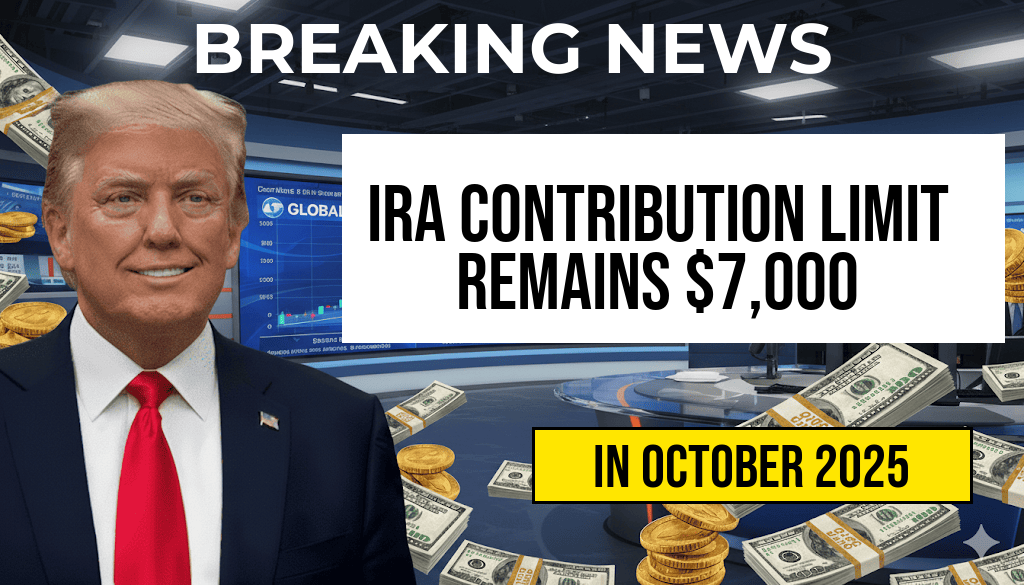The Internal Revenue Service (IRS) has announced that the annual contribution limit for both Traditional and Roth IRA accounts will remain unchanged at $7,000 for the upcoming tax year. This steady figure, consistent since 2023, applies to individuals under age 50, while those aged 50 and above can contribute an additional $1,000 as a catch-up contribution, raising their limit to $8,000. The decision reflects broader economic considerations and aims to provide taxpayers with predictability amidst fluctuating financial markets. Despite inflationary pressures that often prompt increases in contribution limits, the IRS has opted to hold the line, citing stable economic indicators and the importance of maintaining clear, manageable retirement savings parameters.
Understanding IRA Contribution Limits and Implications
The IRA contribution limits serve as a crucial benchmark for retirement planning, influencing how much individuals can set aside each year with tax advantages. The IRS periodically adjusts these thresholds based on inflation and economic conditions, but the unchanged limit signals a cautious approach amid recent fiscal uncertainties. The IRA framework allows workers to contribute pre-tax or after-tax dollars depending on the account type, shaping their retirement savings trajectory.
Details of the Contribution Limits
| Account Type | Standard Limit | Catch-Up Contribution (Age 50 and above) |
|---|---|---|
| Traditional IRA | $7,000 | $1,000 |
| Roth IRA | $7,000 | $1,000 |
It’s worth noting that eligibility to contribute to a Roth IRA phases out at higher income levels, while traditional IRA contributions may be tax-deductible depending on income and participation in employer-sponsored plans. These limits are separate from the contribution caps imposed on other retirement accounts such as 401(k)s, which are subject to different thresholds set annually by the IRS.
Factors Influencing the Decision to Keep Limits Steady
The IRS’s choice to leave contribution limits unchanged often reflects a combination of economic stability and inflation considerations. While inflation has eroded the real value of dollar contributions over time, recent data indicates that the inflation rate remains within a range that does not necessitate an increase in the statutory limit. Moreover, maintaining a consistent cap can help individuals plan their retirement savings more effectively, avoiding surprises that might complicate tax planning.
Economic Context and Future Outlook
Analysts suggest that the decision aligns with broader fiscal policies aimed at stability. The Federal Reserve’s recent stance on interest rates and inflation targets have contributed to a cautious approach in adjusting retirement account thresholds. Experts also note that significant increases could have implications for government revenue and tax policy, given the tax advantages associated with IRA contributions.
Impact on Retirement Planning Strategies
For many savers, the unchanged contribution limits emphasize the importance of maximizing available allowances within current parameters. Financial advisors recommend focusing on consistent contributions and diversifying retirement portfolios to account for market volatility. Additionally, individuals nearing retirement age might consider catch-up contributions to accelerate their savings, especially given the static limit for this category.
Additional Considerations
- Roth vs. Traditional IRA: Since both accounts share the same contribution limits, savers should evaluate which type aligns better with their tax situation and retirement goals.
- Income Limits for Roth IRA: Eligibility to contribute directly to a Roth IRA begins to phase out at certain income levels, which for 2024 starts at $138,000 for single filers and $218,000 for married filing jointly.
- Contribution Deadlines: Contributions for the 2024 tax year can be made until the tax filing deadline in April 2025, providing a window for strategic planning.
Expert Insights and Future Considerations
Financial experts highlight that while the contribution limits remain static, other aspects of retirement planning are evolving. Changes in tax laws, inflation adjustments to other retirement account thresholds, and shifts in market conditions could influence future limits. The IRS reviews these parameters annually, and observers anticipate potential increases in the coming years if inflation accelerates or economic conditions change markedly.
For comprehensive guidance on retirement savings strategies, individuals can consult resources like the Social Security Administration or reputable financial planning services such as Forbes’ retirement section.
Frequently Asked Questions
Question
What is the current IRA contribution limit for traditional and Roth accounts?
Question
Has the IRA contribution limit changed for the upcoming year?
Question
Who is eligible to contribute up to the limit of $7,000 to their IRA accounts?
Question
Are there any income restrictions affecting contributions to Roth or traditional IRAs?
Question
What should investors know about contribution deadlines for the current tax year?






